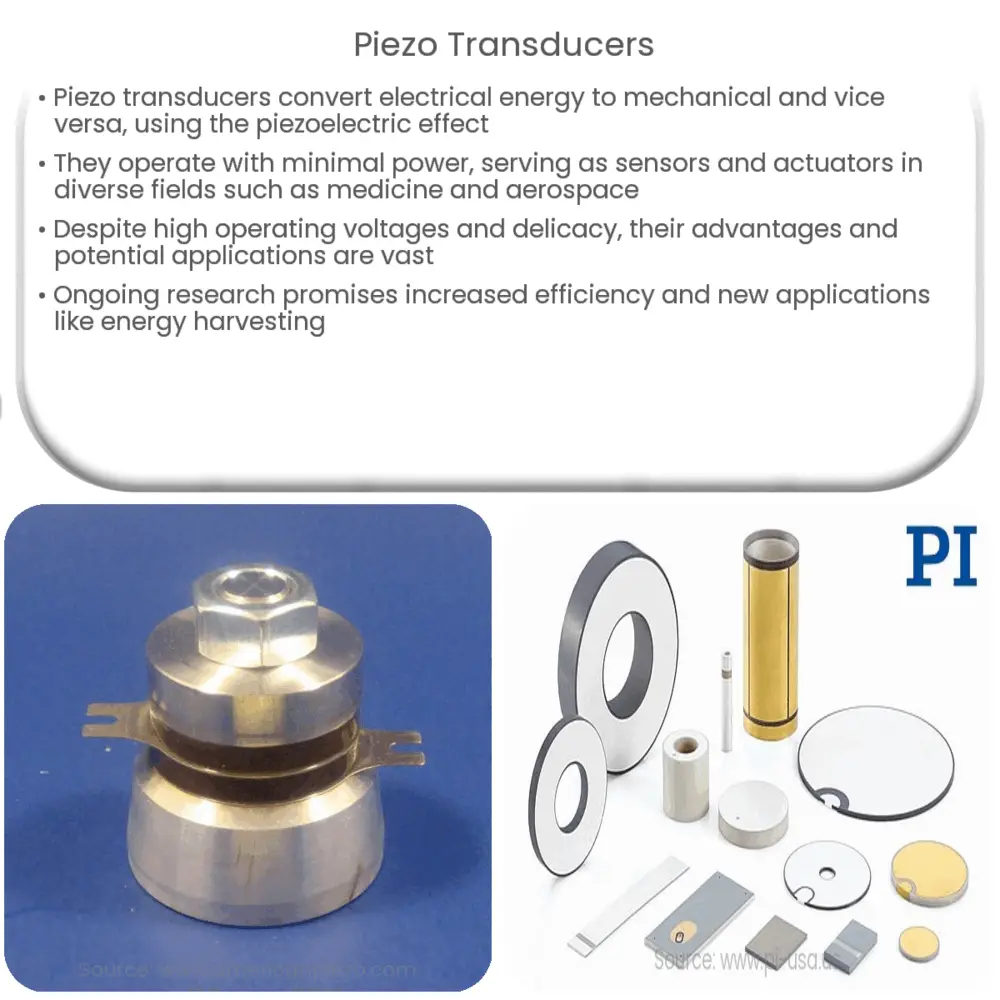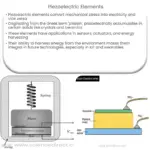Explore the science behind piezo transducers, their diverse applications, advantages, limitations, and future prospects in this comprehensive guide.

Introduction to Piezo Transducers
A piezo transducer is a versatile device that uses the piezoelectric effect to convert electrical energy into mechanical energy or vice versa. This fascinating technology has far-reaching applications, from musical instruments to medical imaging devices.
The Science Behind Piezo Transducers
The term piezoelectricity comes from the Greek words ‘piezein’ (to squeeze or press) and ‘electricity’. It refers to the unique property of certain materials to generate an electric charge when subjected to mechanical stress. This principle is the fundamental operation mechanism behind piezo transducers.
Piezoelectric Materials
At the heart of every piezo transducer is a piezoelectric material. This can either be naturally occurring, such as quartz, or man-made, such as ceramics and certain polymers. These materials are crystalline in structure, with a specific alignment of atoms that allows for the piezoelectric effect.
- Quartz: Known for its stability and durability, quartz was the first discovered piezoelectric material.
- Ceramics: Piezoelectric ceramics, such as lead zirconate titanate (PZT), are highly effective due to their superior electric and mechanical properties.
- Polymers: While less efficient than ceramics, piezoelectric polymers offer flexibility and can be molded into complex shapes.
Operation of Piezo Transducers
A piezo transducer operates in two modes – actuator mode and sensor mode.
- Actuator Mode: When an electric field is applied to the piezoelectric material, the aligned atomic structure of the material is disturbed, resulting in a mechanical deformation. This property is exploited in applications like inkjet printer nozzles and diesel fuel injectors.
- Sensor Mode: When mechanical pressure is applied to the piezoelectric material, it generates an electric charge. This principle is used in applications such as acoustic guitar pickups and ultrasound probes.
The dual functionality of piezo transducers, that is their ability to function as both sensors and actuators, makes them invaluable in a wide array of applications, particularly where precise measurements or control is required. Despite their importance, the underlying mechanisms that enable piezo transducers to function effectively are often overlooked, which we’ll explore in the subsequent section.
Applications of Piezo Transducers
Piezo transducers have found their place in a multitude of fields due to their remarkable versatility. Some key applications include:
- Medical field: They are used in ultrasound equipment to generate images of internal body structures.
- Consumer electronics: In mobile phones and watches, they serve as tiny speakers or buzzers.
- Automotive industry: They enable precise fuel injection in modern diesel engines.
- Aerospace: They are used in accelerometers and gyroscopes for stability and navigation systems.
Advantages and Limitations
Not only are piezo transducers highly sensitive and responsive, but they also operate with minimal power consumption, making them an ideal choice for portable, battery-powered applications. In addition, they are resilient to environmental factors, such as temperature and humidity changes, thereby ensuring a longer lifespan.
However, piezo transducers are not without their limitations. The high operating voltages can be a drawback in certain applications. Additionally, they can be quite delicate, making them susceptible to physical stress and damage.
Futuristic Prospects
The future of piezo transducers looks promising with ongoing research and development. Future iterations may offer increased efficiency, durability, and versatility. They could also feature in applications currently not considered, such as energy harvesting, where ambient vibrations are converted into electricity for low-power devices.
Conclusion
In conclusion, piezo transducers, with their unique ability to interconvert mechanical and electrical energy, have become an integral part of modern technology. The continual advancements in piezoelectric materials and their applications are set to propel this technology even further. Despite certain limitations, the benefits and vast potential applications of piezo transducers underscore their relevance and importance in our technologically advancing society.
Whether we are aware of it or not, piezo transducers play a significant role in our everyday life, from the subtle buzz of our smartphone to the life-saving images of an ultrasound machine. As we continue to innovate and push the boundaries of what is possible, there is no doubt that the humble piezo transducer will be there, silently contributing to our progress.



